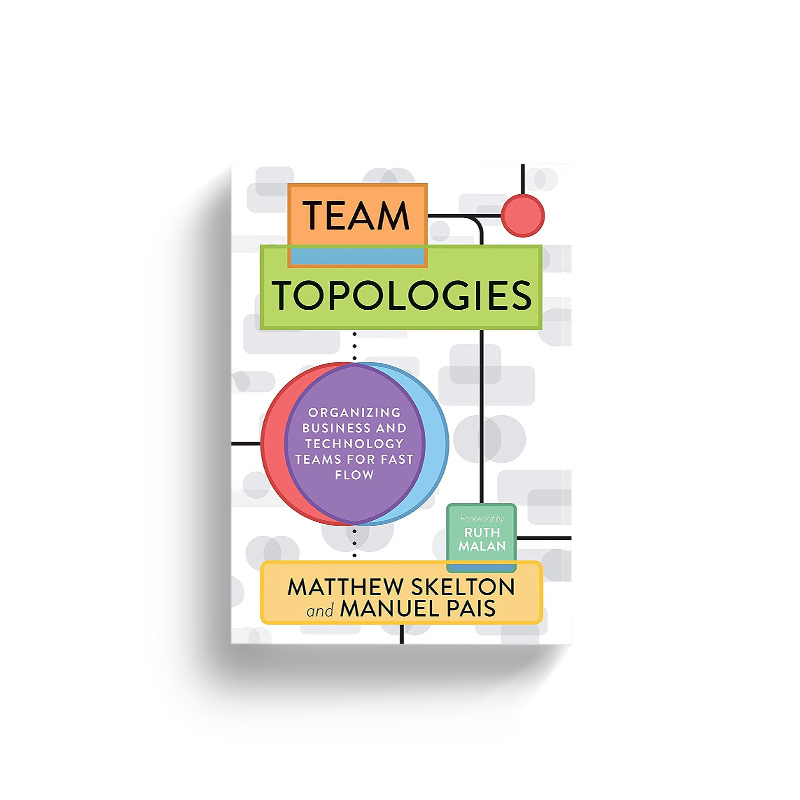Team Topologies by Matthew Skelton and Manuel Pais (Book Review)
Create a high-performing organization that can adapt to change with Team Topologies by Matthew Skelton and Manuel Pais.
This book offers a practical guide to designing effective technology teams that can deliver value consistently. Using real-world examples and clear explanations, Skelton and Pais introduce the concept of team topologies and how to apply them to your organization.
Grab your copy of Team Topologies today and start transforming your organization!
Who Are Matthew Skelton and Manuel Pais?
Matthew Skelton is the co-author of the award-winning book Team Topologies and serves as the CEO at Conflux and Team Topologies. His groundbreaking work in Team Topologies has been recognized as one of the “Best Product Management Books of All Time” by Book Authority and is widely adopted by organizations around the world to revolutionize how they deliver value.
As a leading expert in modern organizational dynamics, Matthew specializes in fostering fast flow within companies. He draws on the principles of Team Topologies, Adapt Together™️, and related practices to guide organizations in their journey toward sustainable, agile, and efficient value delivery.
Manuel Pais is the co-author of the industry-changing book Team Topologies and a passionate advocate for creating more humane workplaces while enhancing business value for customers. Based in Madrid but calling Lisbon home, Manuel delivers motivational keynotes and thought leadership on fast flow principles that resonate with everyone from C-level executives to frontline teams.
Since entering the industry in 2000, Manuel has worn many hats, including developer, tester, release manager, and team lead, before shifting his focus to DevOps and Continuous Delivery consulting in 2015. Through his courses and workshops, Manuel has trained thousands of industry leaders and helped numerous organizations, large and small, improve their software delivery. His expertise lies in aligning technical and social systems within organizations by addressing constraints to flow, such as Conway’s Law, Team Cognitive Load, and Trust Boundaries.
What Makes “Team Topologies” Worth Your Attention?
For business owners managing the challenges of growing and improving their teams, Team Topologies by Matthew Skelton and Manuel Pais offers a straightforward and practical guide to organizing teams. In a world where working together effectively is key to delivering value consistently, this book gives clear steps for setting up teams that can meet today’s needs and handle future changes.
Team Topologies is not just another book filled with theories; it’s an easy-to-follow guide that helps businesses of all sizes build and keep high-performing teams. Skelton and Pais introduce a framework with four main types of teams and three key ways they should interact. This approach is flexible and scalable, making it work well for different organizational sizes and stages of growth.
For business owners looking to balance growth with efficiency, the authors stress the need to align team structures with your business goals, culture, and technology setup. The book provides practical advice on organizing teams to promote fast flow—making it easier to move from ideas to implementation while ensuring the software remains strong and sustainable.
What makes Team Topologies different from other books on organizational design is its emphasis on teams as the main way to deliver value. The authors don’t offer a single solution for everyone; instead, they present a flexible model that can change as your company grows and your technology advances. This flexibility is key for entrepreneurs who need to pivot and adapt quickly in a competitive market.
One of the book’s strengths is how it focuses on the connections between teams. Instead of seeing inter-team issues as obstacles, Skelton and Pais suggest viewing them as valuable insights that can help the organization become more self-sufficient and continuously improve. This approach is especially helpful for business owners aiming to create a culture of innovation and resilience within their teams.
The book also highlights the importance of clear communication and effective interaction between teams. By categorizing teams into four types—Stream-Aligned, Enabling, Complicated-Subsystem, and Platform—Team Topologies guides business leaders on how to optimize each type for better performance and collaboration. Additionally, the three team interaction modes—Collaboration, X-as-a-Service, and Facilitating—offer a clear framework for how teams should work together to keep the workflow running smoothly.
Whether you’re facing issues with team communication, aiming to scale your organization, or looking for a more efficient way to deliver value to your customers, Team Topologies offers insights to help you reach your goals. In a business environment where quick adaptation is crucial for success, this book gives you the blueprint to organize your teams for maximum effectiveness.
Final Thoughts
In today’s fast-paced business world, effective teamwork is essential for success. Team Topologies provides a clear guide for business owners to organize their teams for optimal performance. By understanding the four team types and three interaction modes, you can create a flexible and scalable structure that aligns with your business goals. This book is a valuable resource for entrepreneurs seeking to build high-performing teams and drive innovation in their organizations.

